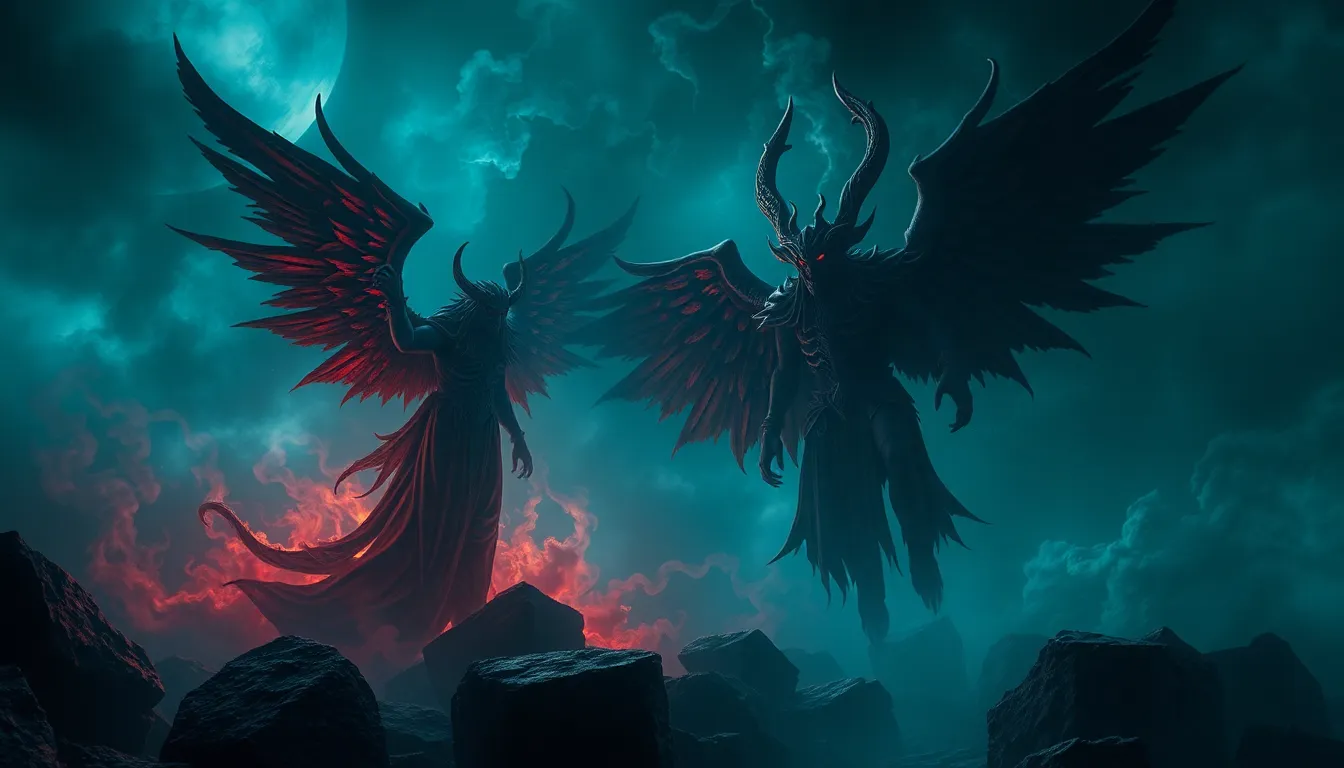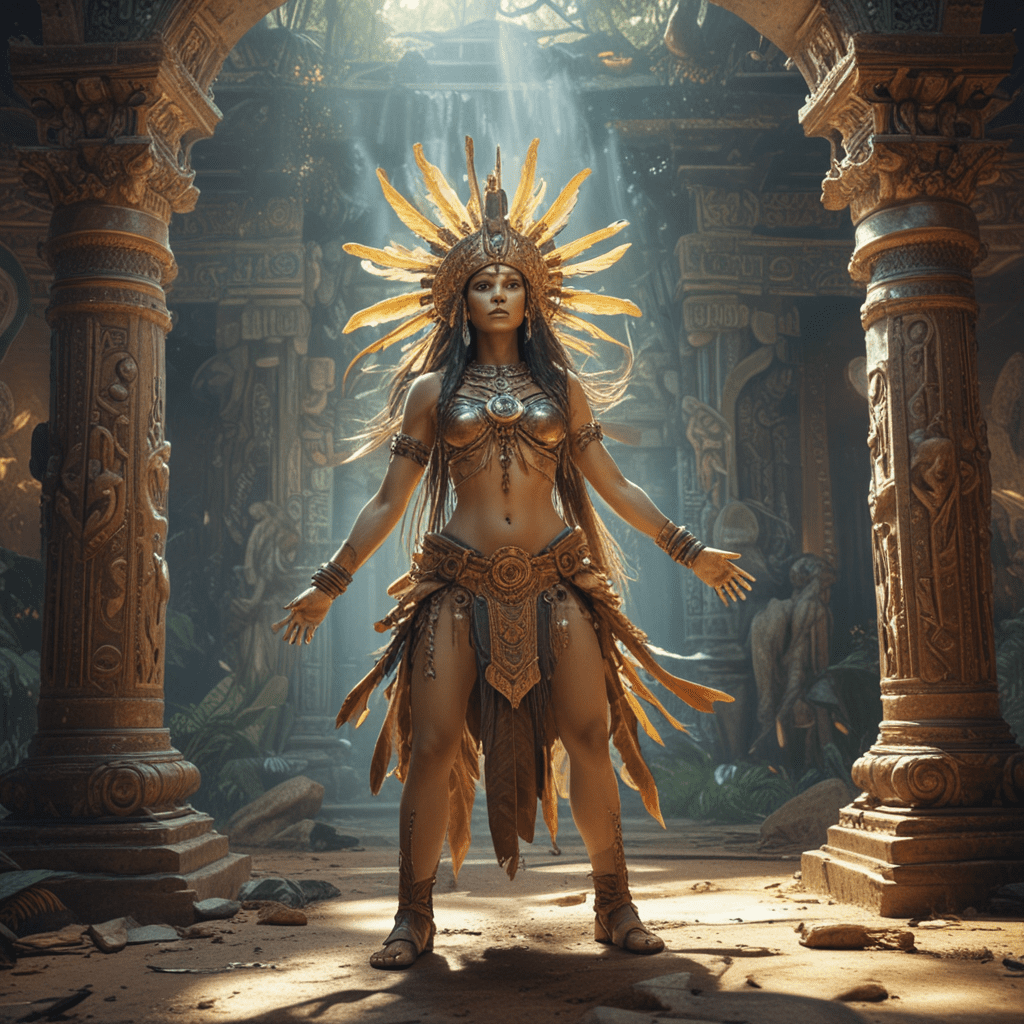Lost Souls and Dark Gods: The Allure of Underworld Myths
I. Introduction
Underworld myths are narratives that delve into the realms of death, the afterlife, and the beings that inhabit these shadowy places. These tales often feature lost souls who wander in search of peace and dark gods who govern the underworld with a mix of fear and respect. The exploration of these themes not only unveils cultural attitudes toward mortality but also sheds light on the human psyche’s fascination with what lies beyond our earthly existence.
This article will explore the historical context of underworld myths, the symbolism of lost souls, the role of dark gods, and the allure of the underworld. Additionally, we will examine the impact of these myths in modern media, their psychological implications, and their evolution across cultures, culminating in a discussion about the future of these narratives.
II. Historical Context of Underworld Myths
Underworld myths have been integral to human storytelling, with ancient civilizations crafting elaborate narratives that reflect their beliefs about the afterlife.
A. Ancient civilizations and their perceptions of the afterlife
Many ancient cultures viewed the afterlife as a continuation of life on earth, governed by specific rules and deities. These beliefs shaped their rituals, funerary practices, and moral codes.
B. Key underworld myths from different cultures
- Greek Mythology: The Greeks believed in Hades, the god of the underworld, where souls underwent judgment and were sent to different realms based on their earthly deeds.
- Egyptian Mythology: The Egyptians revered Osiris as the god of the afterlife, where souls would be weighed against a feather to determine their fate.
- Norse Mythology: In Norse beliefs, Hel ruled over a realm for those who did not die a heroic death, emphasizing the values of bravery and honor.
C. The role of storytelling in shaping cultural attitudes toward death
Storytelling served as a means to convey moral lessons, alleviate fear of death, and provide comfort regarding the unknown, making underworld myths essential to the human experience.
III. The Symbolism of Lost Souls
Lost souls symbolize the struggles and despair that individuals face in life and death.
A. Definition and characteristics of ‘lost souls’ in various traditions
Lost souls are often depicted as spirits unable to find peace or redemption, trapped between worlds due to unresolved issues or sins. They can be seen as reflections of human fears and regrets.
B. Psychological interpretations of lost souls
Psychologically, lost souls may represent parts of ourselves that are neglected or unresolved, embodying feelings of isolation and longing for connection.
C. The journey of lost souls: from despair to redemption
Many myths depict the journey of lost souls as a path toward redemption, highlighting themes of forgiveness, self-discovery, and reconciliation.
IV. The Role of Dark Gods in Underworld Myths
Dark gods are central figures in many underworld myths, embodying both fear and reverence.
A. Overview of prominent dark gods
- Hades: The Greek god who rules over the underworld, often misunderstood as merely a figure of fear.
- Anubis: The Egyptian god associated with mummification and the afterlife, guiding souls through the underworld.
- Hel: In Norse mythology, Hel governs the realm that receives those who die from old age or sickness.
B. The duality of dark gods: fear and reverence
These deities evoke a complex relationship with humanity, representing both the inevitability of death and the possibility of life beyond it.
C. How dark gods influence the narratives of underworld myths
Their roles often serve to illustrate moral lessons about life, death, and the consequences of one’s actions, shaping the narratives that guide cultural beliefs.
V. The Allure of the Underworld
The fascination with the underworld stems from humanity’s innate curiosity about death and the unknown.
A. Fascination with death and the unknown
Underworld myths allow individuals to confront their fears about mortality, providing a space to explore themes of loss and the afterlife.
B. The appeal of exploring moral ambiguity and dark themes
These narratives often delve into moral complexities, challenging societal norms and encouraging critical thinking about good and evil.
C. Cultural reflections on mortality and the afterlife
Through underworld myths, cultures reflect their values and beliefs about life, death, and what lies beyond, fostering a rich dialogue about existence.
VI. Underworld Myths in Modern Media
Modern literature and film continue to draw inspiration from traditional underworld myths, reinterpreting them for contemporary audiences.
A. Representation of underworld themes in literature and film
Many modern works incorporate elements of the underworld, exploring themes of death, redemption, and the supernatural.
B. Analysis of popular works
- “The Sandman” by Neil Gaiman: This graphic novel series weaves together various mythologies and explores the nature of dreams and death.
- “American Gods” by Neil Gaiman: This novel juxtaposes ancient deities with modern life, highlighting the ongoing relevance of myth.
C. Impact of these narratives on contemporary understanding of death
Modern interpretations help demystify death, encouraging open discussions about mortality and the afterlife.
VII. The Psychological Impact of Underworld Myths
Engaging with underworld myths can have profound psychological effects on individuals.
A. How myths shape our fears and beliefs about death
These narratives often reinforce cultural fears about death while also providing frameworks for understanding it.
B. Coping mechanisms derived from engaging with dark themes
Exploring dark themes can offer comfort and a sense of control over the unknown aspects of life and death.
C. The therapeutic potential of exploring underworld narratives
Art therapy and literature can be powerful tools in processing grief and trauma, allowing individuals to confront their fears and find meaning.
VIII. Comparative Analysis of Underworld Myths Across Cultures
While there are common threads in underworld myths, significant differences exist based on cultural context.
A. Similarities and differences in beliefs about the afterlife
Many cultures emphasize judgment and reward or punishment in the afterlife, although the specifics can vary greatly.
B. How geography and environment shape underworld myths
Geographical factors often influence the characteristics of underworld deities and their realms, reflecting the values and fears of the culture.
C. The evolution of these myths over time
As societies evolve, so too do their myths, adapting to new beliefs, technologies, and cultural exchanges.
IX. The Future of Underworld Myths
The ongoing evolution of underworld myths is influenced by contemporary societal issues and technological advancements.
A. Contemporary issues and themes emerging in modern interpretations
Modern interpretations often address themes such as existentialism, environmental concerns, and cultural diversity.
B. The role of technology and global culture in reshaping myths
Globalization and digital media allow for the blending of myths and the dissemination of stories across cultures, enriching the narratives.
C. Predictions on the evolution of underworld narratives
As society continues to grapple with the complexities of mortality, underworld myths will likely adapt, offering new insights and reflections on human existence.
X. Conclusion
Underworld myths serve as a vital part of human storytelling, exploring the profound themes of lost souls and dark gods. Through examining these narratives, we gain insight into our cultural attitudes toward death, the psychological implications of fear and redemption, and the allure of the unknown. As we move forward, the evolution of these myths will continue to reflect our changing beliefs and values about life, death, and what lies beyond.



